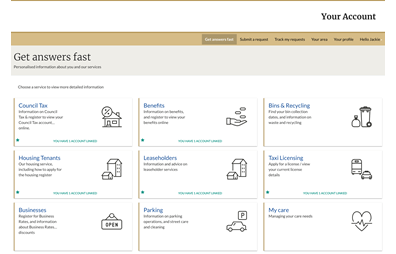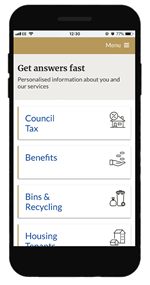Industry voice: Transformation is about continual change, and needs versatile, flexible digital tools to deliver over the long term, writes John Jervis at IEG4

There is no perfection and no ultimate end goal in service transformation; it’s about continual change and continual improvement.
Often described as a “journey, not a destination”, recognising that changing demographics and economic pressures are constantly raising new challenges for public services, nobody can accurately predict what their own organisations will face in the future, only that they will have to be inventive in developing new behaviours and solutions.
Local authorities and other service organisations will have to reinvent their roles and focus on different outcomes for the public, with an emphasis on the roots of societal problems. This needs a culture of ongoing iteration that is ready to grasp the opportunities offered by changes in technology. It needs its digital foundation to be future proofed; and be able to integrate with new techs as strongly as with legacy systems.
It is possible to find a tool that can support this approach over the medium to long term. A growing number of authorities are now utilising IEG4’s OneVu customer engagement system as the flexible backbone of their digital service transformations.
The issues came under the spotlight at a recent IEG4 event with contributions from two organisations using the system – 3C (the Cambridge City, South Cambridgeshire and Huntingdonshire shared service) and the London Borough of Lambeth. Their presentations, alongside one from London Borough of Hackney and the discussion with an audience of local government officials and technology specialists at Microsoft's London HQ, highlighted a series of factors in successful service transformation.
Breaking silos
One is the necessity to break down the silos in the organisation, ensuring that executive teams work collaboratively and are willing to free up the data they hold for wider use. In some places, it demands a radical cultural shift, but if it does not happen it will smother a transformation before it even gathers steam.
Another, is the development of a strong, in-house digital capability, providing an authority with the means to draw on the knowledge of its various service teams, innovate and develop solutions that really meet the needs of local communities. This is reflected in a trend away from large scale outsourcing, with some councils taking their digital operations back in-house and aiming to equip more staff with relevant skills.
Related to this is the increasing availability of low code and, in IEG4’s eDesigner’s case, no code, digital platforms. These make it possible to configure components to create services, rather than rely on in-depth coding skills, and can bring frontline staff to the forefront of service design.
There is also a growing recognition of the value of APIs, the elements of software code that provide other groups or organisations with access to elements of a dataset. They facilitate data flows for a stronger integration of services and to support the evolution of new solutions.
Along with this is the increased emphasis on agile development techniques, in which teams do not begin with a detailed specification of the desired solution but identify a desired outcome and develop the solution through a series of iterations. It is about failing fast, establishing what works and moving onto the next stage.
Smarter procurement
Related to this, is the need to move away from complex, long term procurement of IT systems, towards an emphasis on smaller, more modular procurements to run for shorter periods. This contributes to the future proofing towards service transformation, providing the scope for continual change and further innovation.
In turn, this can open up opportunities from new technologies, such as machine learning, AI, blockchain and the internet of things. It is impossible to foresee all of what they will offer, but the potential will increase if a local authority has a digital backbone that can integrate and harness the data they provide.
The other big technology change is the steady shift towards cloud computing. The public sector has recognised the cost savings, flexibility and security benefits of cloud and there is a consensus that this will underpin their own flexibility in using digital systems.
There is also a growing interest in collaboration around the use of components. While some councils have backed away from shared services, a few are experimenting with a more limited sharing of specific elements of digital infrastructure, such as web or service development platforms. This provides scope not just for savings but benefiting from others’ expertise and long-term collaborations in finding solutions.
The OneVu potential


IEG4’s OneVu aligns with these factors to provide immense potential. The public see it as a customer portal, with a single sign-on using email or social media accounts, a single view of their interactions with the council and the ability to track progress on service requests and enquiries which, in return, means a reduction in unnecessary contact for councils.
It takes in IEG4’s e-Forms builder, and with the Open Process engine, makes it possible to develop case management and workflow functions, effectively providing a ‘CRM light’ system for the organisation.
All the data on the system resides within the Microsoft Azure cloud, providing all the advantages of a secure system that can be integrated with an array of business systems. This gives a council flexibility in its service designs and also supports the scope for OneVu to work with emerging technologies, as, and when, they are adopted by local government. The Azure Cloud has already aided with the development of OneVu AI, a smart call agent, who provides quick answers to citizens’ enquiries.
Inside the system is an API framework that integrates with those of other systems to enable the gathering of data from all sources within a council, and those of its partners. It does so in a way that the business user can easily understand, with the ability to feed into case management, workflow and customer portal functions of OneVu.
In addition, customers’ own new developments can be undertaken with a ‘no code’ solution, providing the scope for non-techies to use the data flows in developing new service solutions.
Future proofing
All of this provides OneVu with great opportunities to adapt, effectively providing future proofing that is essential to long term transformation.
Underlying all this, is the fact that digital transformation is not about technology; it is about a readiness to innovate, deal with cultural change and create new services to cope with emerging challenges. However, it draws on the capabilities of technology, and the OneVu customer engagement system provides an array of capabilities, giving local government great scope to design solutions to those challenges.
It is a highly valuable tool that provides a solid foundation for digital and service transformation, wherever an organisation is on its journey.

